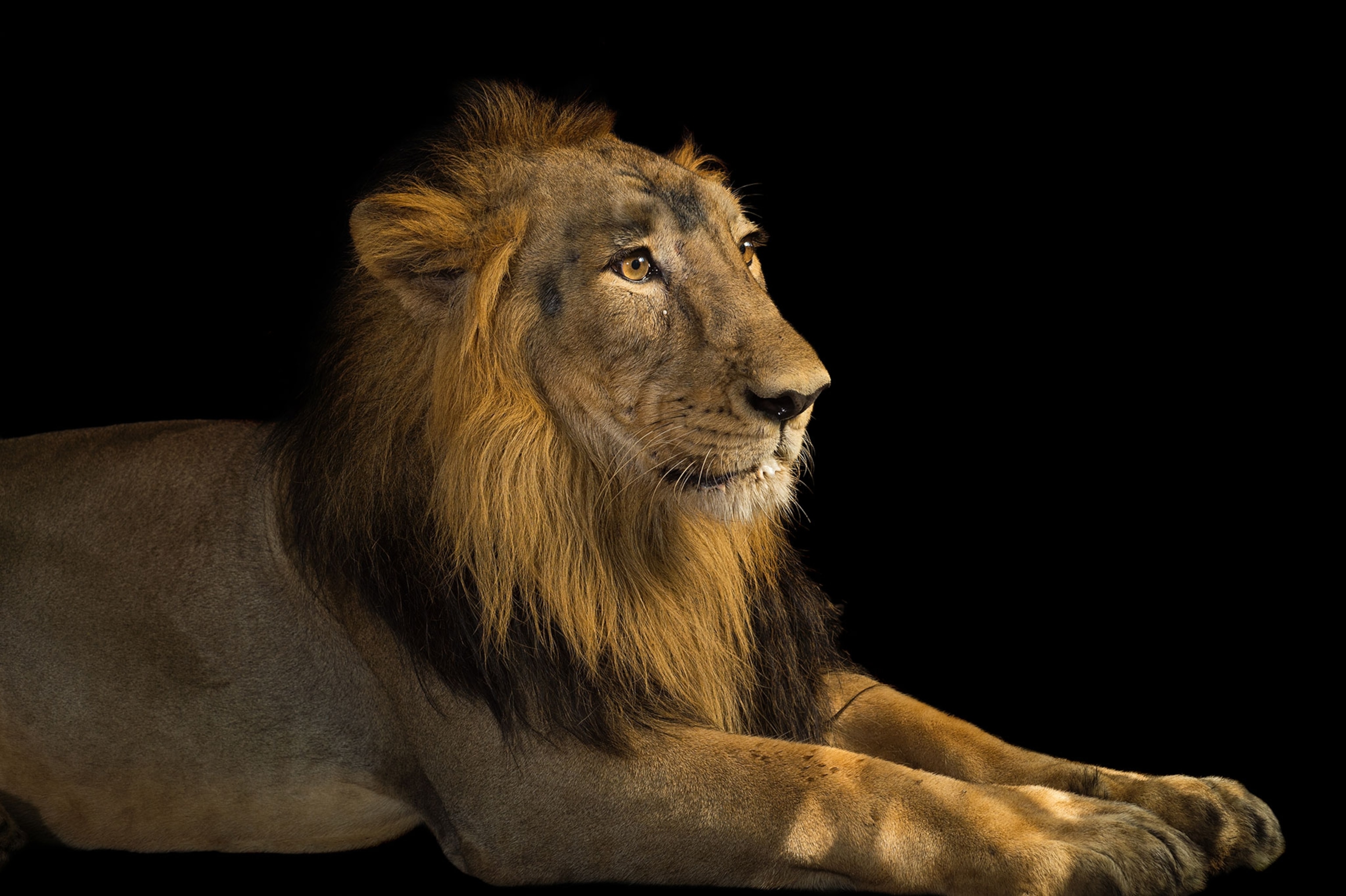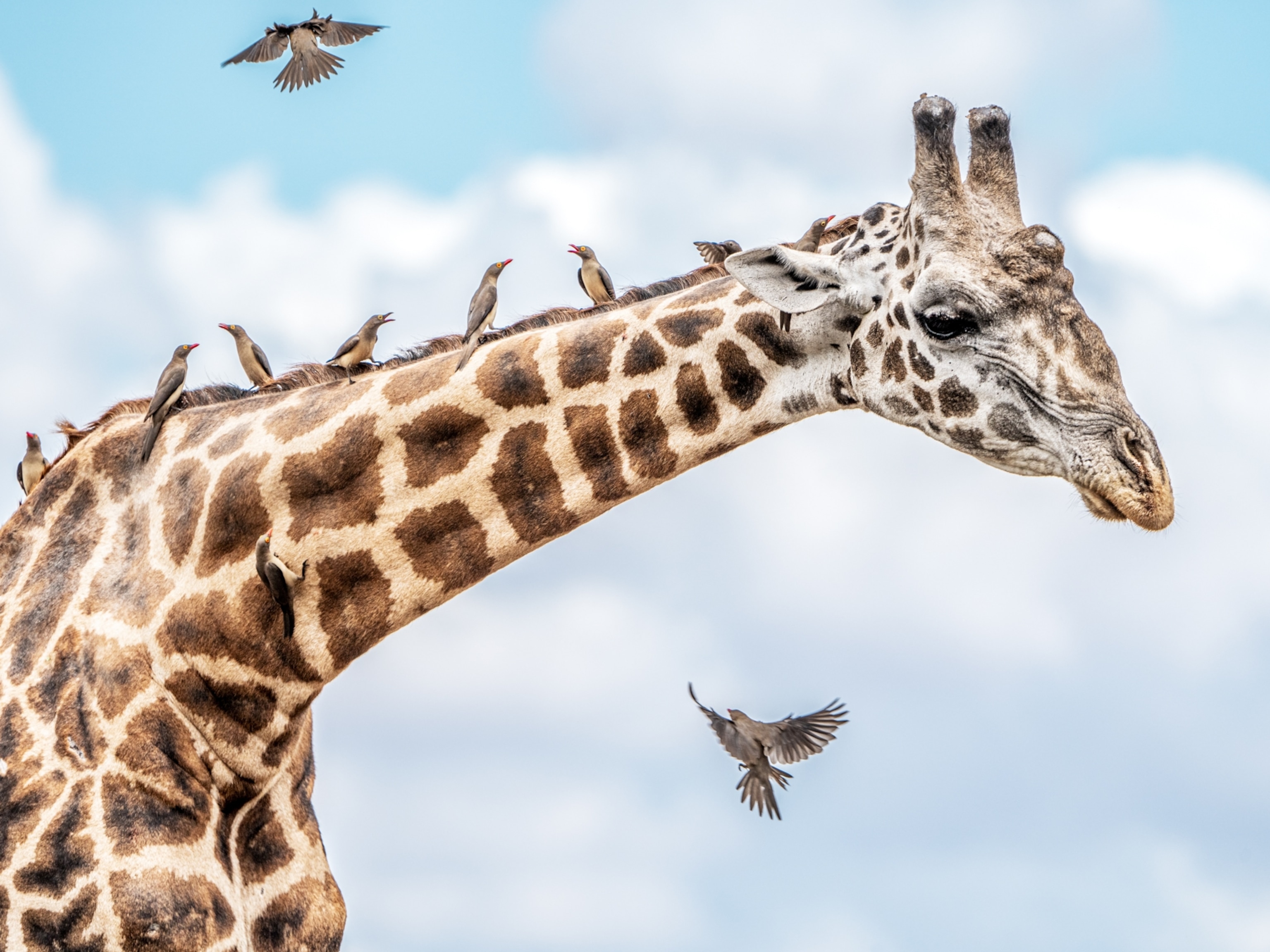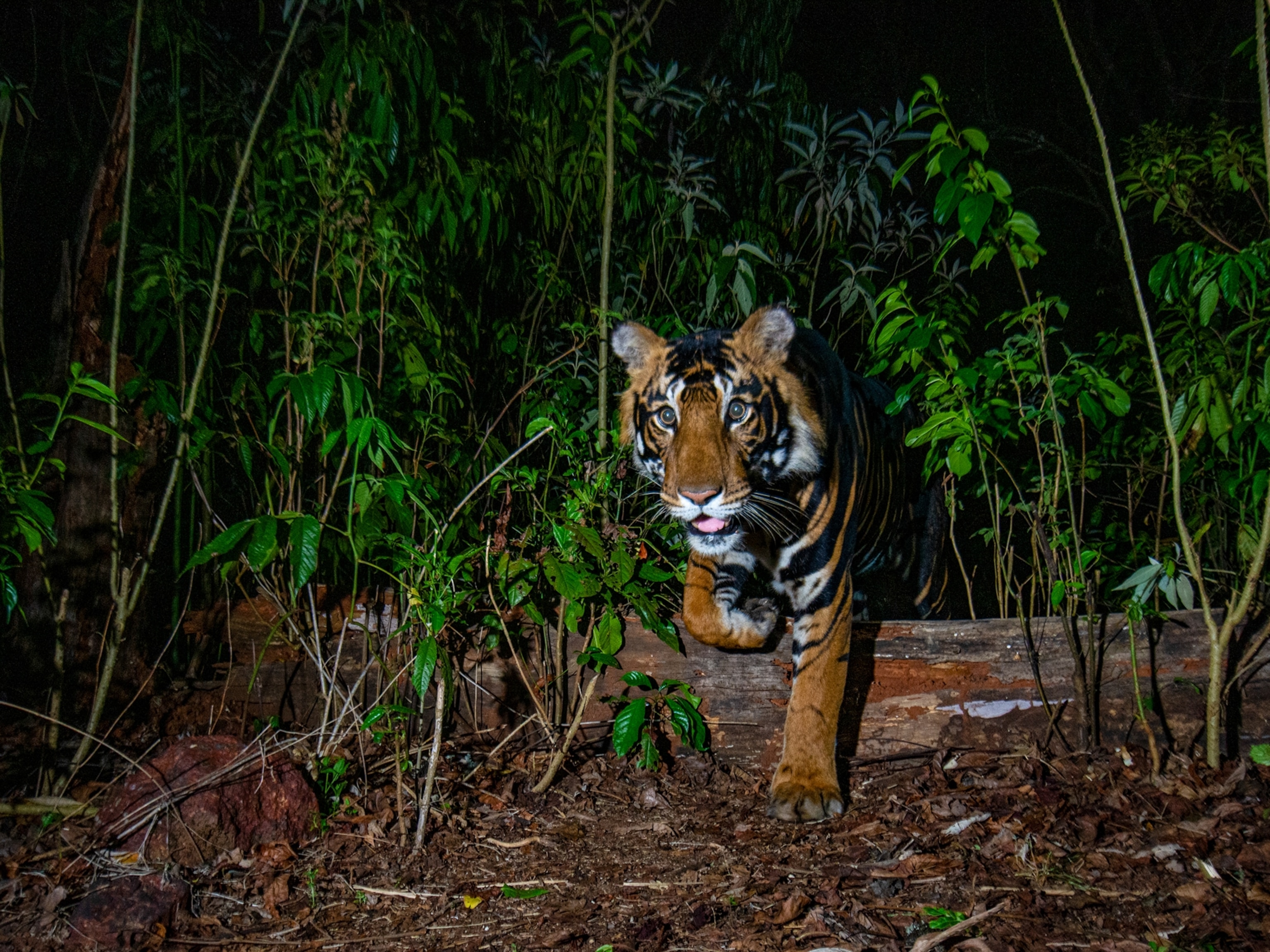
Asia's Lions Live in One Last Place on Earth—and They're Thriving
While Asiatic big cats are rare, their spiritual importance helped inspire their human neighbors to keep them safe.
African lions get, well, the lion's share of attention—but some would be surprised to learn there's another subspecies of the big cat in Asia.
The Asiatic lion once roamed vast swaths of the Middle East and Asia, but indiscriminate hunting and killing to protect livestock led to their mass slaughter. By the late 1800s, as few as 10 of the animals remained on Earth.
Their last refuge became western India's Gir National Park, a protected area where the number of these endangered animals is now on an upward trend. According to a 2015 census, a little more than 500 lions—the world's total wild population—live in Gir, up from 411 in 2010. In comparison, about 20,000 African lions remain in the wild. (See a map of the lion's decline worldwide.)
Like their African kin, Asiatic lions live in prides, and the females do most of the hunting, taking down prey like antelope. They look much like their cousins, too, though they tend to be slightly smaller than African lions and live in forests instead of open grasslands. They also have a distinctive fold of skin on their stomachs, and their manes are less plush.
“There’s so few conservation success stories when it comes to carnivores,” says Gitanjali Bhattacharya, program manager at the Zoological Society of London’s South and Central Asia programs, “and the Asiatic lion, for me, it’s really a story of hope. Because you’ve got a population that’s growing, a community that’s supportive, and the lion is taking back its former range.”
Lionhearted
That success can be attributed to the effort of conservation groups and local communities' dedication to protecting the animals. (Read more about National Geographic's Big Cats Initiative.)
The people who live around Gir have a deep respect for the lions and patrol the jungle looking for poachers—though illegal hunting hasn't been a problem for a long time, says Bhattacharya.
They're "right on top of it, monitoring threats,” she says.
For them, "the lion is beyond an endangered species,” Bhushan Pandya, member of the Gujarat State Board for Wildlife and Asiatic lion conservationist, says by email. “Lion, the king of jungle, is the symbol of strength and power.”
The predator is also a religious icon in Hinduism; the goddess Durga rides a lion, and the god Narasimha is half lion. (See National Geographic's most stunning pictures of big cats.)
Cats on the Move
Even so, scientists are concerned that disease or natural disaster could wipe out the entire Gir population in one fell swoop. Some Asiatic lions live in zoos worldwide, but there are no plans to release those animals to build a wild population. (Read: "Lions Approach Extinction in West Africa.")
To avoid this fate, the Asiatic Lion Reintroduction Project, an Indian government initiative, plans to capture some Asiatic lions from Gir and relocate them to the Palpur-Kuno Wildlife Sanctuary, located in another state. That way, if anything happens to Gir, there will still be lions in Palpur-Kuno.
That plan has proven controversial, however. Though Pandya supports the idea of translocation, he doesn't think that Palpur-Kuno is a good place for the lions. There isn't enough prey, poaching gangs may be a threat, and tigers—potential competitors—already live in the region, he says. (Read: "Tiger Got Your Goat? Here’s Who to Call.")
What's more, the Gujarat State Wildlife Department has also objected to moving the animals outside the state, suggesting they would be better off living in two other parks within their state.
Despite such disputes, Bhattacharya hopes that other big cat conservation projects can learn from the Asiatic lion.
"There’s an inspiration there for carnivore conservation around the world."
Follow Kristin Hugo on Tumblr.



